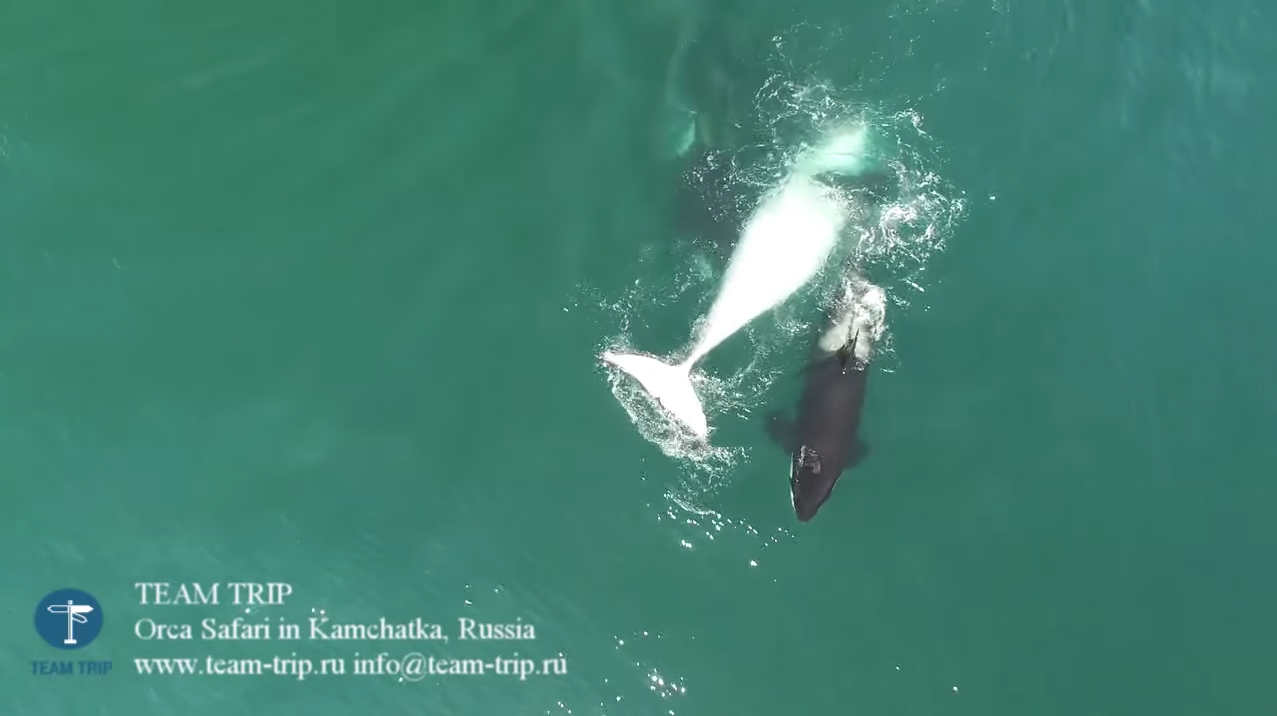Blood in the Water: Drone Video Films Whale-Hunting Orcas

It was a dramatic chase with a gory end. A pod of orcas recently pursued and killed a minke whale off the coast of Kamchatka, Russia, and a member of a marine expedition captured the bloody scene on video from above, using a drone.
Researchers with the Far East Russia Orca Project (FEROP) spotted the whale-hunting orcas while on a scientific expedition in Avacha Gulf, southeast of Kamchatka. The six-day survey partnered FEROP biologists with Kosatka Cruises and Team Trip to document the region's orcas, FEROP representatives wrote in a Facebook post.
The scientists spied a group of orcas in pursuit of a minke whale — an unusual sight, because orcas that hunt mammals are few in number and are rarely glimpsed in that region, according to the researchers. But what followed was even more exceptional, the scientists said: They found themselves with a front-row seat to the whale's last minutes of life, which ended as the orcas tore the animal apart. [Photos: Orcas Are Chowing Down on Great-White-Shark Organs]
Team Trip's Mikhail Korostylev piloted a drone overhead to capture photos and video of the scene as it unfolded, and the organization shared the video on YouTube on July 3.
In the video, several orcas — including calves — pursued the whale, estimated to be about 39 feet (12 meters) long, RT News reported. FEROP researchers told RT News that the orcas chased the whale to the point of exhaustion, then held it under water to drown it, before ripping it to pieces. Then, on June 28, FEROP representatives shared photos of the hunt and kill in a Facebook post and on Instagram.
The biologists identified the orcas as "transients," a term describing killer whales that live in smaller social groups than so-called "resident" orcas do. Transients also roam a wider range in coastal waters and hunt mammals, while resident orcas primarily eat fish, according to the National Oceanic and Atmospheric Administration.
Once the hunters had dispatched their victim, FEROP biologists submerged microphones in the water to capture the orcas' vocalizations, later publishing the recordings on SoundCloud. The killer whales produced a variety of chirps, squawps, trills and whistles. This was an unusual amount of noise for mammal-eating orcas, which are typically quieter than their cousins that feed on fish, turtles and other marine prey, FEROP biologist Asia Danishevskaya wrote in a Facebook post.
Sign up for the Live Science daily newsletter now
Get the world’s most fascinating discoveries delivered straight to your inbox.
"There is still much to learn in order to understand the Russian Far East killer whale populations," researchers explained on the FEROP website. "We hope that our study will help prevent their further capture and will lead to a greater understanding of their population structure and to the threats to their habitat."
Original article on Live Science.

Mindy Weisberger is an editor at Scholastic and a former Live Science channel editor and senior writer. She has reported on general science, covering climate change, paleontology, biology and space. Mindy studied film at Columbia University; prior to Live Science she produced, wrote and directed media for the American Museum of Natural History in New York City. Her videos about dinosaurs, astrophysics, biodiversity and evolution appear in museums and science centers worldwide, earning awards such as the CINE Golden Eagle and the Communicator Award of Excellence. Her writing has also appeared in Scientific American, The Washington Post and How It Works Magazine. Her book "Rise of the Zombie Bugs: The Surprising Science of Parasitic Mind Control" will be published in spring 2025 by Johns Hopkins University Press.










